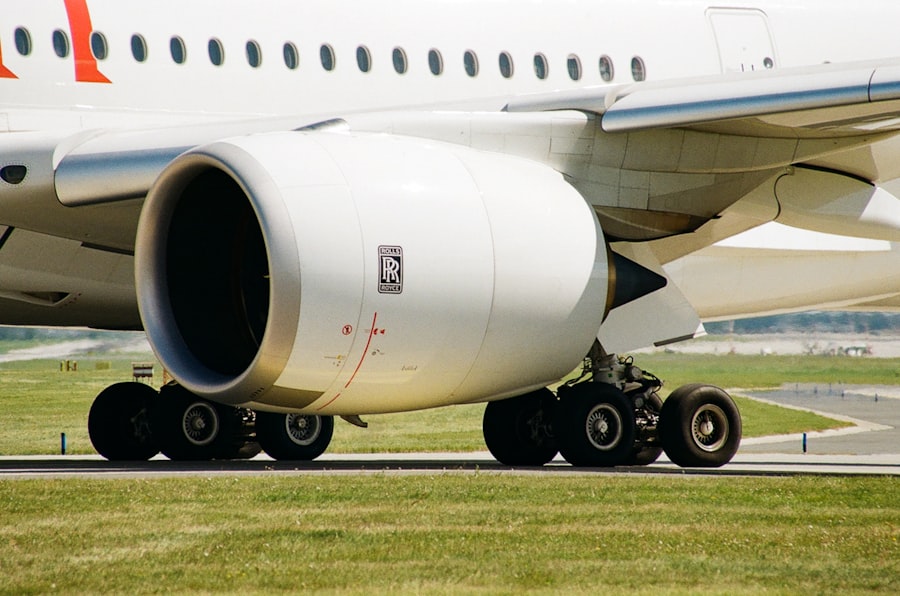The Aerospace Industries Association (AIA) serves as a pivotal organization within the aerospace sector, representing a diverse array of companies involved in the design, manufacture, and support of aircraft, spacecraft, and related systems. Established in 1919, the AIA has evolved into a key advocate for the interests of its members, which include major defense contractors, commercial aviation manufacturers, and suppliers. The association plays a crucial role in shaping policies that affect the aerospace industry, promoting innovation, and fostering collaboration among its members.
By providing a unified voice for the industry, the AIA helps to navigate the complex regulatory landscape and address challenges that arise in an ever-evolving global market. The AIA’s mission extends beyond mere representation; it actively engages in initiatives that promote safety, sustainability, and technological advancement. As the aerospace industry faces increasing scrutiny regarding environmental impacts and safety standards, the AIA is at the forefront of advocating for practices that enhance both operational efficiency and ecological responsibility.
Through its various programs and partnerships, the association seeks to ensure that the aerospace sector not only meets current demands but also anticipates future challenges and opportunities.
Key Takeaways
- The Aerospace Industries Association (AIA) is a trade association representing the aerospace and defense industry in the United States.
- The aerospace industry has a rich history and has evolved significantly over the years, from the early days of aviation to the modern era of space exploration.
- AIA plays a crucial role in advocating for policies that support the aerospace industry and its impact on national security, economic growth, and technological innovation.
- Key players and members of AIA include major aerospace and defense companies, as well as suppliers and service providers in the industry.
- Innovation and technology are driving forces in the aerospace industry, with advancements in aircraft design, materials, propulsion, and space exploration shaping the future of aviation.
History and Evolution of the Aerospace Industry
The history of the aerospace industry is a fascinating journey marked by innovation, competition, and significant milestones. The roots of this industry can be traced back to the early 20th century when pioneers like the Wright brothers made their historic flight in 1903. This event sparked a wave of interest in aviation, leading to rapid advancements in aircraft design and technology.
By World War I, military aviation had gained prominence, with nations investing heavily in aircraft development for reconnaissance and combat purposes. The post-war period saw a transition from military to commercial aviation, as companies began to explore the potential for passenger air travel. The evolution of the aerospace industry continued through the mid-20th century with the advent of jet propulsion and the introduction of commercial jetliners like the Boeing 707.
This era marked a significant shift in air travel, making it more accessible to the general public and revolutionizing global transportation. The space race of the 1960s further propelled the industry into new realms, culminating in landmark achievements such as the Apollo moon landing. These developments not only showcased human ingenuity but also laid the groundwork for future exploration and satellite technology.
Current Role and Impact of the Aerospace Industries Association

Today, the Aerospace Industries Association plays a multifaceted role in shaping the future of aviation and space exploration. As a leading advocate for its members, the AIA engages with government officials, regulatory bodies, and international organizations to influence policies that impact the aerospace sector. The association’s efforts are particularly crucial in areas such as defense spending, research funding, and environmental regulations.
By fostering dialogue between industry stakeholders and policymakers, the AIA ensures that the voices of its members are heard in critical discussions that affect their operations. Moreover, the AIA is instrumental in promoting collaboration among its members to address common challenges. Through various committees and working groups, companies can share best practices, develop standards, and collaborate on research initiatives.
This collective approach not only enhances competitiveness but also drives innovation within the industry. The AIA’s commitment to workforce development is another vital aspect of its current role; by advocating for education and training programs, the association helps to ensure that a skilled workforce is available to meet the demands of an increasingly complex aerospace landscape.
Key Players and Members of the Aerospace Industries Association
| Name | Position | Company |
|---|---|---|
| Eric K. Fanning | President and CEO | Aerospace Industries Association |
| David F. Melcher | Former President and CEO | Aerospace Industries Association |
| John L. Garrison | Chairman of the Board | Aerospace Industries Association |
| Leanne Caret | Chair of the Board | Aerospace Industries Association |
The membership of the Aerospace Industries Association is diverse, encompassing a wide range of companies from large multinational corporations to small and medium-sized enterprises (SMEs). Major players such as Boeing, Lockheed Martin, Northrop Grumman, and Raytheon Technologies are prominent members that significantly influence industry trends and policies. These companies are involved in various sectors including commercial aviation, defense contracting, space exploration, and unmanned systems.
Their participation in the AIA allows them to collaborate on critical issues while also benefiting from shared resources and insights. In addition to these large corporations, SMEs play an essential role within the AIA’s membership base. These smaller companies often specialize in niche markets or provide innovative solutions that contribute to larger projects.
By being part of the AIA, SMEs gain access to valuable networking opportunities, advocacy support, and resources that can help them grow and thrive in a competitive environment. The AIA recognizes that fostering a diverse membership is crucial for driving innovation and ensuring that all voices within the aerospace community are represented.
Innovation and Technology in the Aerospace Industry
Innovation is at the heart of the aerospace industry, driving advancements that enhance safety, efficiency, and sustainability. The AIA actively promotes research and development initiatives aimed at pushing technological boundaries. One notable area of focus is the development of sustainable aviation fuels (SAFs), which have gained traction as a means to reduce carbon emissions from air travel.
Companies are investing in alternative fuel sources derived from renewable resources to create a more environmentally friendly aviation sector. Another significant trend is the integration of advanced technologies such as artificial intelligence (AI), machine learning, and automation into aerospace operations. These technologies are being utilized to optimize flight operations, improve maintenance processes, and enhance safety protocols.
For instance, predictive maintenance powered by AI can analyze data from aircraft systems to anticipate potential failures before they occur, thereby reducing downtime and improving operational efficiency. The AIA supports these technological advancements by facilitating partnerships between industry leaders and research institutions to accelerate innovation.
Challenges and Opportunities for the Future of Aviation

As the aerospace industry looks toward the future, it faces a myriad of challenges that require strategic responses. One pressing issue is the need for sustainable practices amid growing concerns about climate change. The aviation sector is under increasing pressure to reduce its carbon footprint while maintaining growth in air travel demand.
This challenge presents an opportunity for innovation as companies explore new technologies and practices that can lead to more sustainable operations. Additionally, geopolitical tensions and supply chain disruptions pose significant challenges for aerospace manufacturers. The COVID-19 pandemic highlighted vulnerabilities within global supply chains, prompting many companies to reassess their sourcing strategies and production processes.
The AIA advocates for policies that promote resilience within supply chains while encouraging collaboration among members to share insights on best practices for navigating these complexities.
Advocacy and Policy Initiatives of the Aerospace Industries Association
The Aerospace Industries Association is deeply engaged in advocacy efforts aimed at influencing policies that impact its members and the broader aerospace sector. One key area of focus is defense spending; as national security concerns evolve, the AIA works tirelessly to ensure adequate funding for defense programs that support both military readiness and technological advancement. By collaborating with lawmakers and government agencies, the association seeks to secure investments that will bolster innovation within defense-related aerospace projects.
In addition to defense advocacy, the AIA is committed to promoting policies that support workforce development and education within the aerospace sector. Recognizing that a skilled workforce is essential for maintaining competitiveness, the association advocates for initiatives that enhance STEM education and vocational training programs. By partnering with educational institutions and government agencies, the AIA aims to create pathways for individuals seeking careers in aerospace while addressing potential skill gaps within the industry.
The Future of Aviation with the Aerospace Industries Association
As we look ahead to the future of aviation, it is clear that organizations like the Aerospace Industries Association will play a crucial role in shaping its trajectory. With a commitment to innovation, advocacy, and collaboration among its diverse membership base, the AIA is well-positioned to address both current challenges and emerging opportunities within the aerospace sector. By fostering an environment conducive to technological advancement while advocating for sound policies that support growth and sustainability, the AIA will continue to be a driving force in ensuring that aviation remains a vital component of global transportation for years to come.
The ongoing evolution of technology will undoubtedly bring about new paradigms in air travel and space exploration. As electric propulsion systems gain traction and urban air mobility concepts take shape, organizations like the AIA will be instrumental in guiding these developments through effective policy advocacy and collaborative initiatives among industry stakeholders. The future of aviation is bright with potential; through its unwavering commitment to excellence and innovation, the Aerospace Industries Association will help navigate this exciting journey into uncharted skies.


